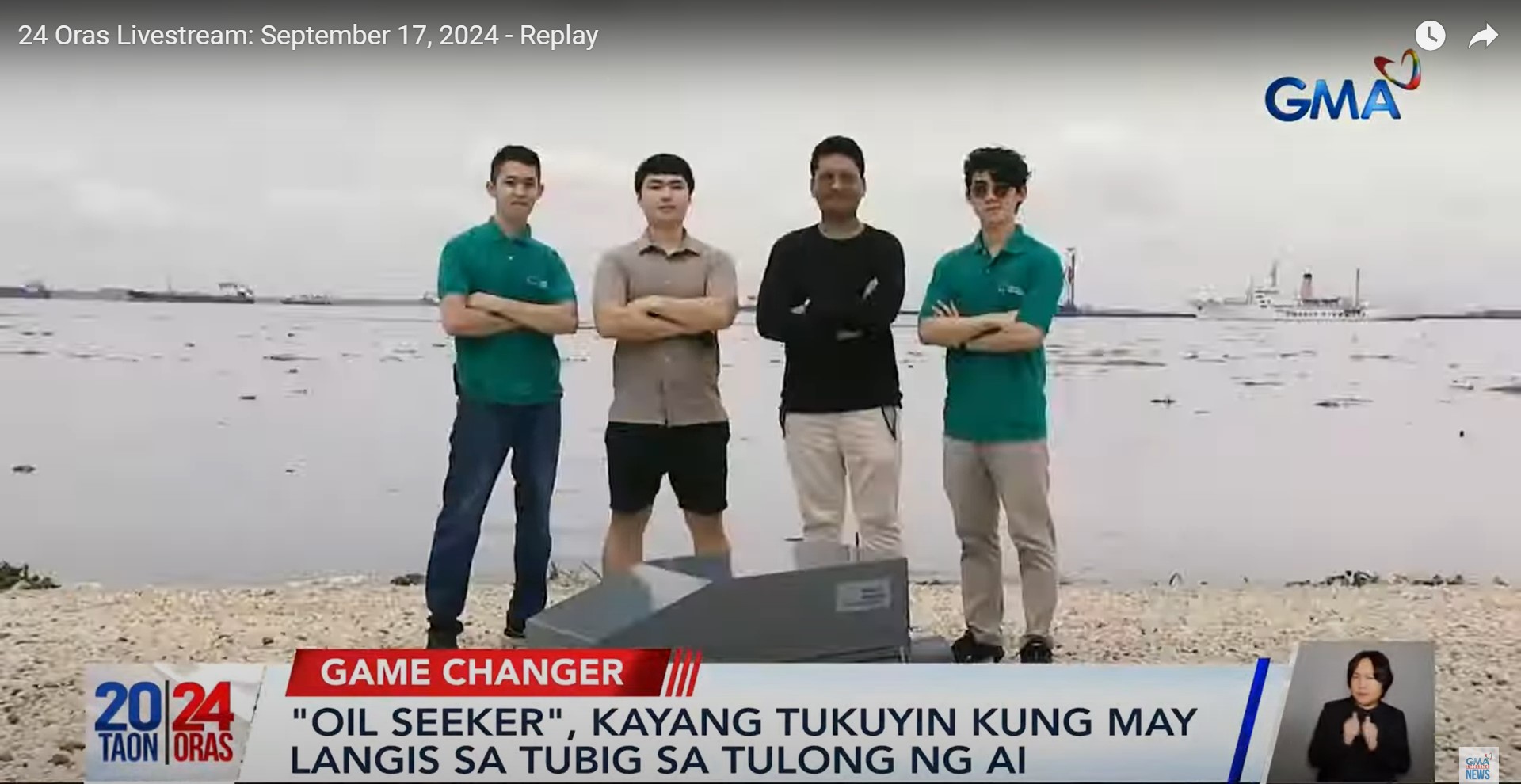Gen Zers create watercraft that uses AI, machine learning to detect oil in bodies of water

A team of Gen Zers has developed a watercraft that uses artificial intelligence (AI) and machine learning to detect oil in bodies of water, according to a report on 24 Oras’ “Let’s Change the Game” segment on Tuesday.
Their creation comes at the right time.
Last July, three consecutive incidents of oil spills occurred off the coast of Bataan. The incidents posed environmental risks to marine life and the ecosystem. The oil spills also affected the livelihood of fishing communities.
Tech innovators Masaya, Carl, Tim, and Kang built the Oil Seeker prototype that uses technology to help address these marine mishaps.
Carl said their group believes the Philippines needs an invention like the Oil Seeker since it is an archipelago.
The Oil Seeker is equipped with a camera and with the use of AI image processing and machine learning, it can identify if there is oil on the water in real time.
“Sa pamamagitan ng AI, gumawa kami ng isang system na once i-fineed mo doon ang thousands of photos ng crude oil under different lighting conditions, kaya niyang matutunan na ito ay isang oil at next time mare-recognize niya ito pag nakita niya uli,” Carl said.
(Through the use of AI, we came up with a system that once it is fed with thousands of photos of crude oil under different lighting conditions, the device can learn and recognize oil on the water the next time it encounters it.)
The team said the Oil Seeker is more affordable compared to the usual gas sensor oil detector and can track a range of 1 kilometer with its global positioning system (GPS).
At a demonstration in Manila Bay, the watercraft’s alarm was triggered once it detected the oil sample.
The Oil Seeker can be controlled through a dedicated mobile app, where the data can also be accessed.
It is also equipped with other sensors that can make various measurements of water conditions.
“To confirm it, meron tayong mga water parameters na sinusundan. Merong PH level, water temperature, and turbidity, just to name a few,” host Martin Javier reported.
(To confirm it, we are following water parameters. It has PH level, water temperature, and turbidity, just to name a few.)
“Hopefully dumating yung time na ma-connect namin siya sa satellites and also ma-distribute namin yung data to different government agencies gaya ng DOST at ng PAGASA,”Carl said.
(Hopefully, a time will come when we can connect it to satellites and distribute the data to different government agencies such as the Department of Science and Technology and state weather bureau PAGASA.) —Mariel Celine Serquiña/RF, GMA Integrated News




